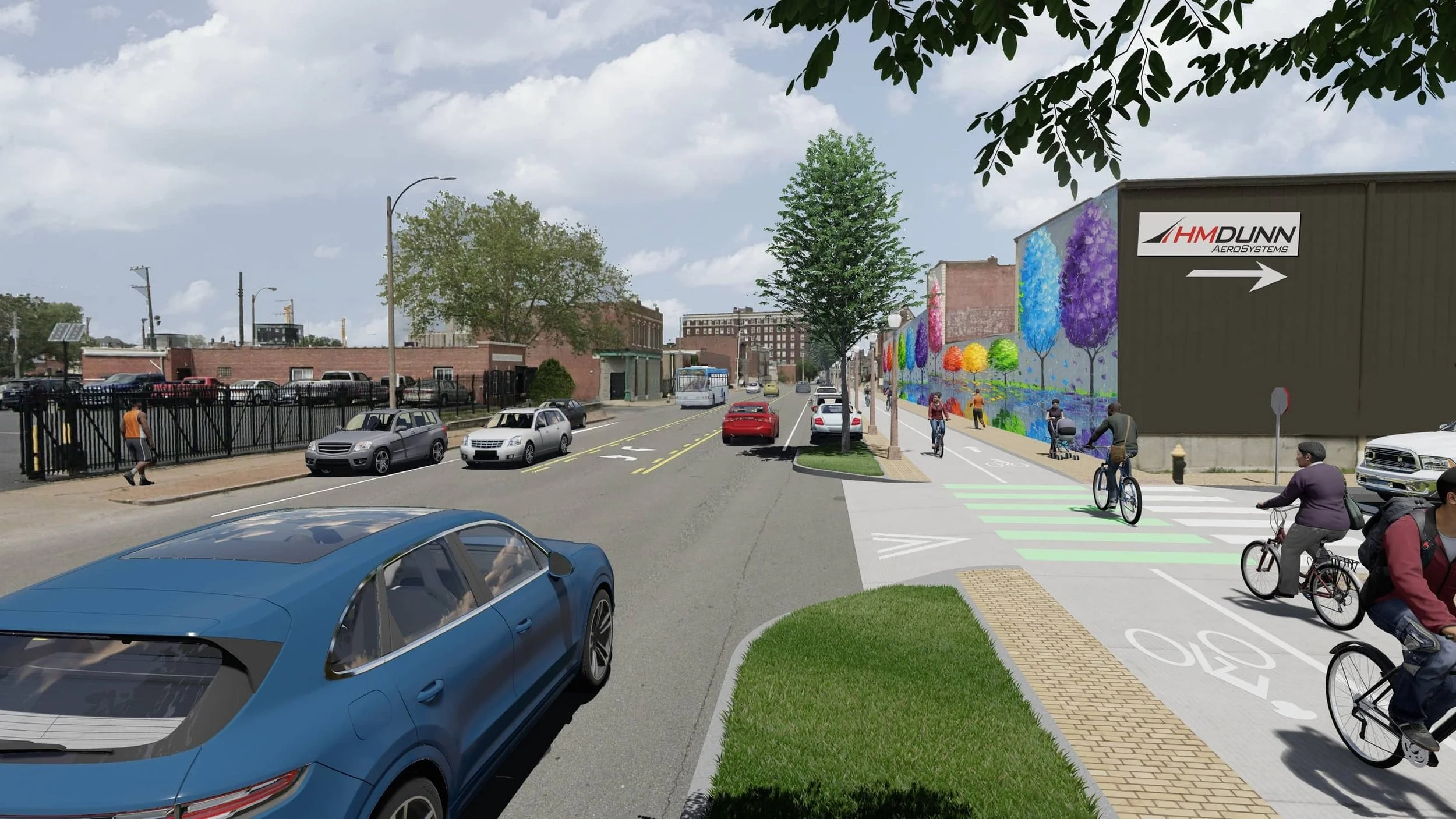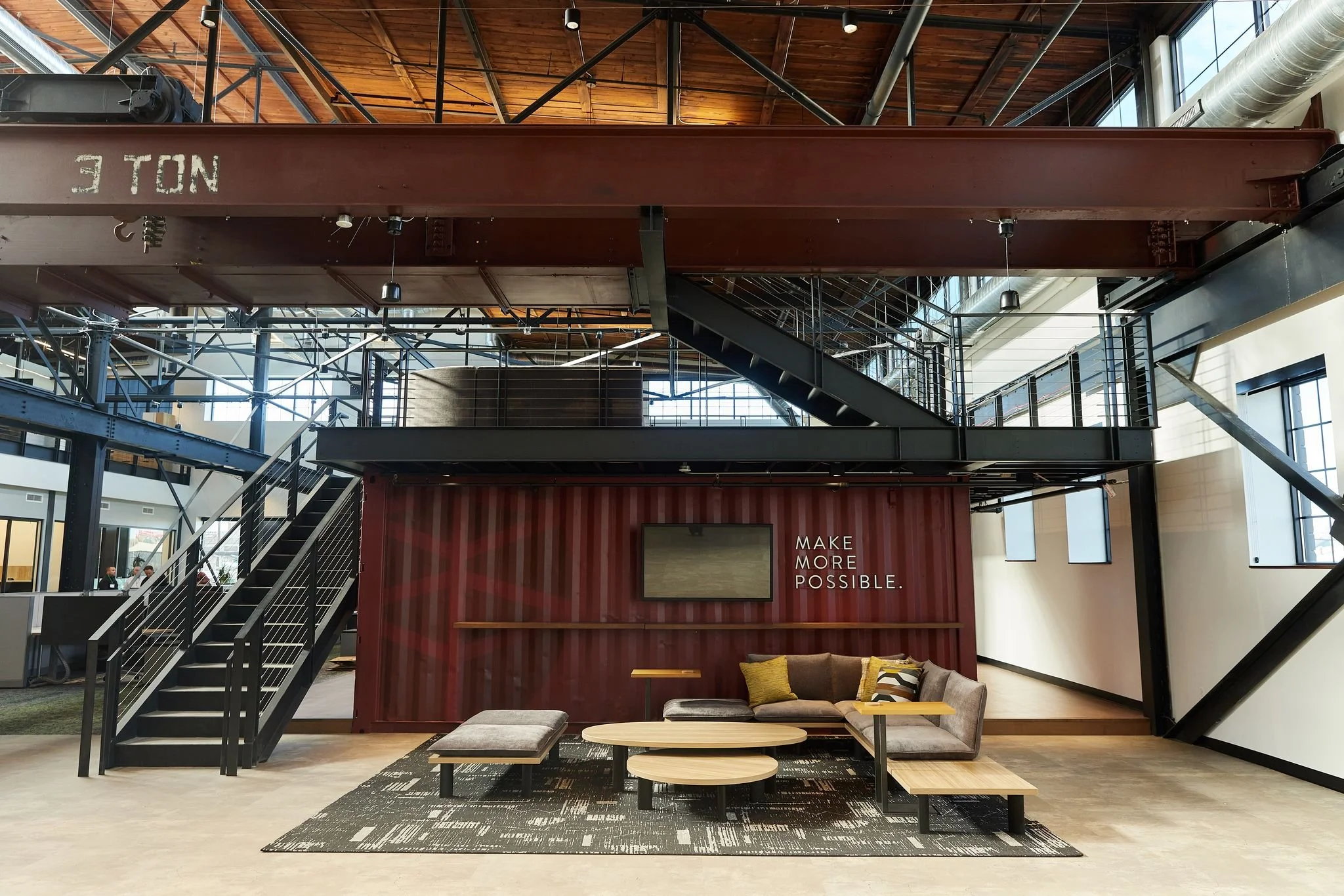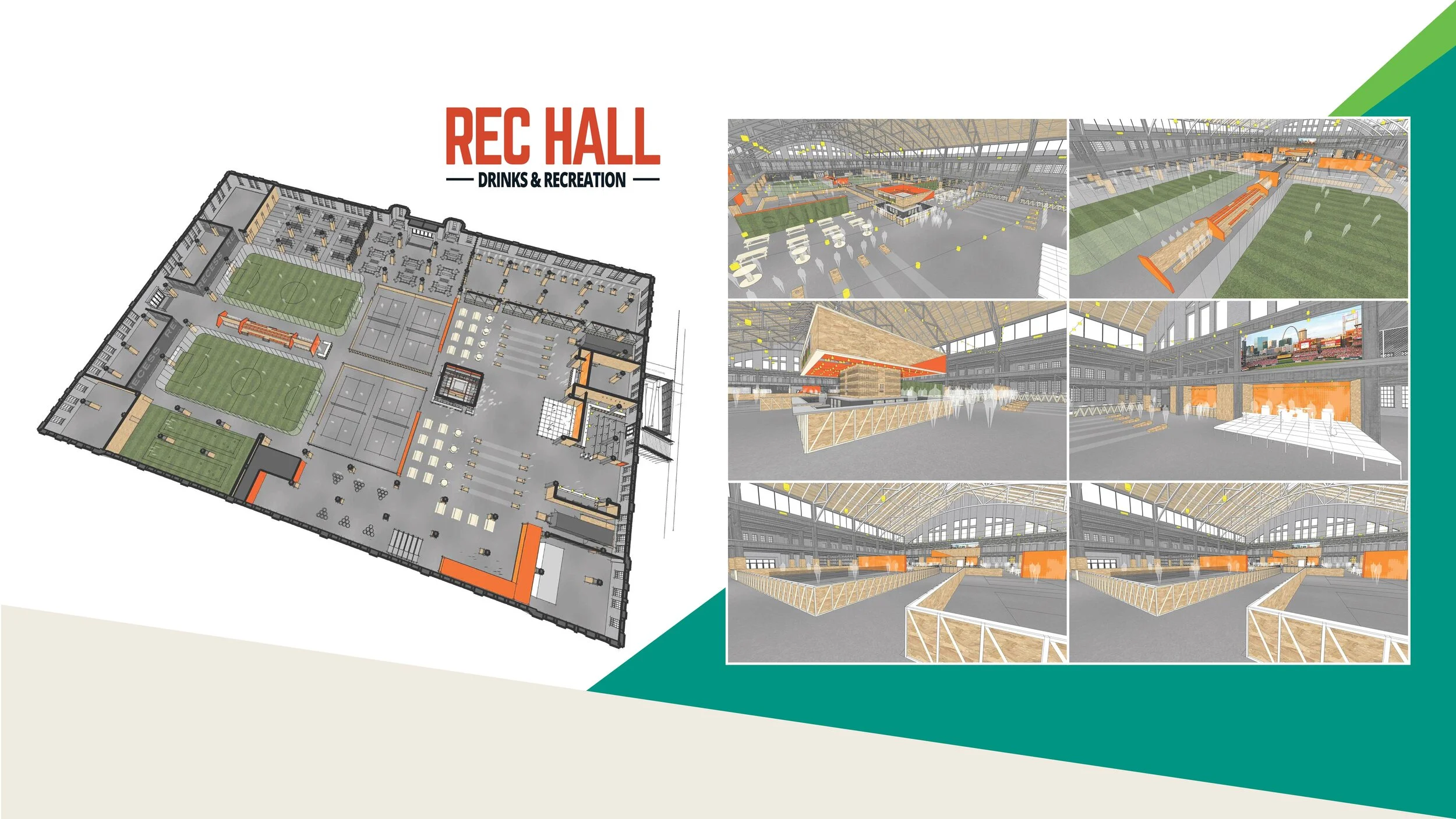Feature image courtesy of HOK.
TCARE's expansion includes prime location on dedicated bike lane
FEATURE IMAGE: The Tower Grove Connector, a 1.4-mile dedicated bike lane, will run directly in front of TCARE's new facility on Vandeventer Ave. in St. Louis' Botanical Heights neighborhood, providing new infrastructure to further connect city neighborhoods. Image credit: Tower Grove Connector/www.towergroveconnector.com.
Green Street expands into new city headquarters
Vision for greatness ahead for St. Louis
St. Louis commercial real estate should be headed for great things in 2021, judging by insights provided in “Greater St. Louis and a Vision for Greatness,” a March 9 Retail Spotlight Shift webinar from the St. Louis CCIM chapter.
Tiffany Wiegers, 2021 president of CCIM STL, kicked off the event by thanking sponsors as critical to providing services and resources for the chapter and announcing that scholarships are available for upcoming courses (details are on the CCIM STL website).
Events hosts were Tony Kennedy of Colliers International and Tom Ray of CBRE.
“This is a timely and important discussion about the future of our region,” said Greater St. Louis, Inc. founder and CEO Jason R. Hall, in describing Greater St. Louis Inc. as a combination of five organizations (AllianceSTL, Arch to Park, Civic Progress, Downtown STL, Inc. and the St. Louis Regional Chamber) aiming to reduce historic fragmentation and create one united voice.
“We have to make a decision that we will be a community on the rise or on the decline. We need the same vision, same tenacity, same energy (as in the sports sector) to grow the region.”
“Greater St. Louis brought together eight key growth initiatives from day 1 (January 1, 2021),” Hall said. “It’s all about jobs — retain, attract and create; elevate our regional reputation; and advance common goals. The urban core is essential.”
Among the positive indicators, St. Louis has seen $8 million in commercial real estate during the pandemic.
“And that has continued to grow. St. Louis can be a global leader in biotech and agtech,” Hall said.
An important example is the 1,400 new jobs coming with Accenture. Other encouraging signs are redevelopment of the Butler Building, which has been one of downtown’s largest vacant buildings, and Green Street Workforce Housing, a partnership for “one of the largest inclusive housing projects in The Grove.
Such place-making projects have a huge impact on bringing business and residential growth to St. Louis.
“We are coming together as a geospatial center of excellence, with a long-term plan in place,” Hall added.
Hall cited entrepreneurship as another incredible force in being re-energized.
“St. Louis is launching new businesses and is first in the country for women-owned businesses,” he said. “We are aggressively back in business.”
Hall quoted Entrepreneur magazine as recently saying that “St. Louis is on the precipice of leading the United States in 21st-century innovation.”
While the St. Louis area hasn’t had a basic jobs plan for more than a decade, “we are now the only metro area to develop one in terms of the pandemic and the new civil rights movement,” Hall said.
“We have to drive inclusive growth. We have got to focus on inclusive growth and close spatial and racial gaps.”
Greater St. Louis is funded by private sector business as investors, and “the business community has to be much more engaged to make (our vision) a reality,” Hall noted.
“We have to make St. Louis better overall and understand the perception of St. Louis in the country. We started STLMade as a way to shine a light on the positive and tell our own story. We will take the story national. It’s a people-centered, data-driven approach.”
In line with such efforts, the AllianceSTL partnership aims to “accelerate growth by recruiting new jobs and business investments to the 15-county bistate St. Louis region,” according to Chief Business Attraction Officer and president Steven S. Johnson.
“We have an exclusive external focus on business and economic development,” he said. “Our key audiences are site selectors, real estate developers and companies in our main targeted verticals: manufacturing and production; financial and information services; bioscience and health technology; geospatial; agtech; transportation and logistics; and the aerospace, automotive and defense industries.”
Many of those targets are in local commercial real estate because of their current work in location services, Johnson noted.
The Alliance is using social media and related advertising along with traditional advertising to those primary key audiences, along with individual outreach and relationship-building. Marketing is essential — a lesson that St. Louis is learning from cities like Austin, Texas. “Many of the markets we admire have been marketing business attraction for decades.”
Typical projects for the Alliance include “straight-up business development to attract companies and headquarters to St. Louis,” which represents 80% of its focus. Such companies are generally new to the area or have no St. Louis presence yet. Cooperation is vital: “We work with economic development partners; we can do nothing by ourselves,” Johnson said. “Our relationships and partnerships are as strong now as ever, and that is good for St. Louis.”
To build on those connections, “we ask businesses exactly what they’re look for.” The answer is usually “talent availability and sourcing, business continuity, and the cost of labor. “We are finding that location is as much about mitigating risk as anything else,” Johnson said.
Agriculture technology is another important business sector for St. Louis, thanks to its central location and accessibility to a huge resource of agricultural producers, according to Thad Simons, founder and managing director of The Yield and The Yield Lab Institute, a “cooperative network of venture funds to advance food and agriculture technology globally,” with companies in Ireland, Argentina, Brazil, Chile, Singapore, France and Luxembourg. The lab is the company’s nonprofit arm.
When he came to St. Louis in 2014 for a three-year assignment with Monsanto, “I was curious about the agtech space,” Simons recalled. “I realized the difficulty of getting projects off the ground. Part of the problem was understanding what ‘agtech’ means.”
With agriculture as one of the largest elements of the geospatial sector, the advantage for St. Louis is that it is “right in the center of agricultural production and distribution. The strength we bring is less the money that the connections,” Simons said. “The impact of the agriculture sector on St. Louis is tremendous.”
While many large organizations already have a local presence — the largest associations for farmers are all based in St. Louis, “we mentor smaller companies to come to St. Louis.” There is still a need to “find champions of St. Louis and stay in touch with them,” Simons said. He is encouraged by the expectation that “there will be lots of stories of companies coming here through word of mouth.”
Simons sees St. Louis as a “really hot space” that is “fostering research and technology.” Of the company’s 50 global projects, 12 are in St. Louis. Driving new investment and presence in the area are projects and innovations that go beyond traditional uses of agricultural products, such as a commercially viable indoor farm and “a small-scale project along Delmar to address food deserts” (the absence of grocery stores). “It’s intended to be for-profit, so we will sell products to restaurants, but also donate to the community,” he said.
Now getting started in St. Louis is a NASA Challenge to investigate “how growing food in space can relate to growing food on Earth,” Simons added.
While Simons is optimistic about business growth, he sees a need for expanded investment. “St. Louis is strong and getting stronger in human capital, but still not where we should be in financial capital,” he said.
The hemp industry offers the prospect of growth as an alternative protein and in oils and nutrition, once regulation and legality are in place.
Looking ahead
For St. Louis business and commercial real estate to succeed, it is crucial “to be thinking five, 10, 20 years ahead to create self-perpetuating environment in geospatial and build up an innovation ecosystem,” said Hall. “That will give St. Louis a durable advantage.”
Asked about the impact of a new mayor on commercial real estate and business, Hall said the upcoming mayoral election is a “generational change; both candidates are speaking about growth and the need for inclusional growth. It’s an exciting time for St. Louis. Magic happens when we have public and private alignment. There will be exciting opportunities to work together.”
“We seem to have two candidates who will be very hands-on and pro-development. We will work with everybody,” Johnson said.
“Whoever becomes mayor will have to realize that there is an urban-rural divide, and a need for much better understanding between those segments of the region,” Simons said.
A recording of the event is available at https://www.linkedin.com/company/ccim-st-louis-metro-chapter/ or
https://www.youtube.com/channel/UCO2uJM-RnLRetiKTNvYAUVA.









